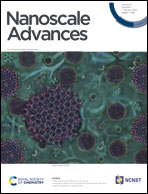Recent advances in formic acid electro-oxidation: from the fundamental mechanism to electrocatalysts
Abstract
Direct formic acid fuel cells have attracted significant attention because of their low fuel crossover, high safety, and high theoretical power density among all the proton-exchange membrane fuel cells. Much effort has been devoted to the study of formic acid oxidation, including the reaction processes and electrocatalysts. However, as a model reaction, the anodic electro-oxidation process of formic acid is still not very clear, especially regarding the confirmation of the intermediates, which is not helpful for the design and synthesis of high-performance electrocatalysts for formic acid oxidation or conducive to understanding the reaction mechanisms of other small fuel molecules. Herein, we briefly review the recent advances in investigating the mechanism of formic acid electro-oxidation and the basic design concepts of formic acid oxidation electrocatalysts. Rather than an exhaustive overview of all aspects of this topic, this mini-review mainly outlines the progress of this field in recent years.

- This article is part of the themed collection: Recent Review Articles


 Please wait while we load your content...
Please wait while we load your content...